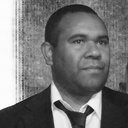Predictors of acute bacterial meningitis in children from a malaria-endemic area of Papua New Guinea.
Paraules clau
Resum
Predictors of acute bacterial meningitis (ABM) were assessed in 554 children in Papua New Guinea 0.2-10 years of age who were hospitalized with culture-proven meningitis, probable meningitis, or non-meningitic illness investigated by lumbar puncture. Forty-seven (8.5%) had proven meningitis and 36 (6.5%) had probable meningitis. Neck stiffness, Kernig's and Brudzinski's signs and, in children < 18 months of age, a bulging fontanel had positive likelihood ratios (LRs) ≥ 4.3 for proven/probable ABM. Multiple seizures and deep coma were less predictive (LR = 1.5-2.1). Single seizures and malaria parasitemia had low LRs (≤ 0.5). In logistic regression including clinical variables, Kernig's sign and deep coma were positively associated with ABM, and a single seizure was negatively associated (P ≤ 0.01). In models including microscopy, neck stiffness and deep coma were positively associated with ABM and parasitemia was negatively associated with ABM (P ≤ 0.04). In young children, a bulging fontanel added to the model (P < 0.001). Simple clinical features predict ABM in children in Papua New Guinea but malaria microscopy augments diagnostic precision.



